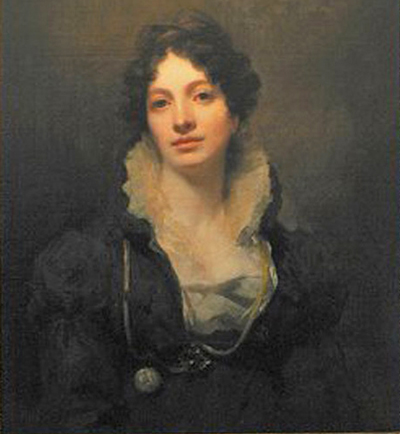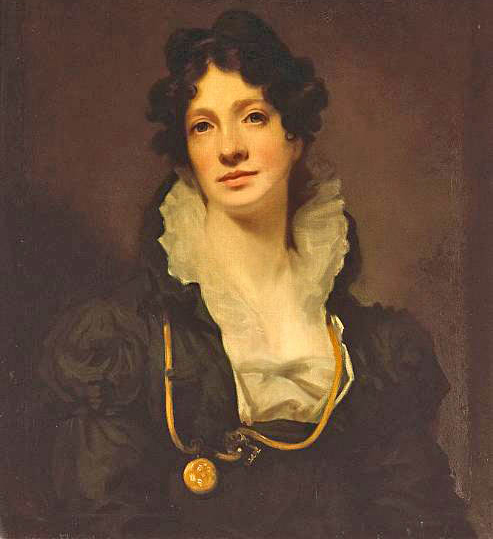THE distinguished artist Sir Henry Raeburn RA painted a stunning portrait of a lady who spent part of her life in Rosneath . . . but did he paint another of the same lady?
That is the question asked by a distinguished art and antiques dealer who lives in Australia and owns what he thinks is the original version.
The subject was Mary Wilson (1789-1847), who lived in Rosneath Castle after her marriage in 1809. Mary married James Smith of Jordanhill, a well-known trader, geologist and man of letters, and they spent the first years of their married life in the castle owned by the Duke of Argyll. Later they settled in Jordanhill, and they had two sons and seven daughters.
Her husband was one of an extraordinary generation of Glasgow entrepreneurs. He was an enthusiastic yachtsman and came to be regarded as the father of yachting on the Clyde, and was also interested in geology and sea-shells.
He made a number of voyages to the Arctic, and he was so respected that pioneers travelling to Greenland named landmarks after him and his family including Cape James, Cape Mary and Jordanhill Island.
Edinburgh-born Sir Henry Raeburn (1756-1823) was the most significant portrait painter of his era in Scotland.
In 1812 he was elected president of the Society of Artists in Edinburgh, and in 1815 became a full member of the Royal Scottish Academy. He was knighted by George IV in 1822 and appointed His Majesty's Limner for Scotland at the Earl of Hopetoun House.
The beautiful Mrs Smith, her husband and her father were all sitters.
The first portrait of her came up for sale at Christie’s in London in 1974 and was bought by English-born John Hawkins, who was then living in New South Wales, Australia.
Mr Hawkins graduated from the Royal Military Academy at Sandhurst in 1962, was commissioned into the Middlesex Regiment in 1962, but resigned his commission and emigrated in 1967. He moved to Chudleigh, Tasmania, in 2003.
He recalls: “I purchased the painting in the Christies sale all those years ago because I liked it, always the best way to buy something, and it hangs in my dining room.”
A founder member and immediate past president of the Australian Antique & Art Dealers’ Association, he has run an international antique business with clients all over the world for 40 years.
In 2008 he saw that a Bonham’s auction house in America was advertising a lot which had the provenance of his painting of Mrs Smith, and wrote to complain, saying that he believed the item on sale was a copy. As a result, Bonham’s added a note to the auction catalogue indicating that the painting was a second version by Raeburn.
Bonham’s European cataloguer and specialist, Janell Snape, replied to Mr Hawkins: “As you may know, Raeburn often painted numerous versions of the same subject, sometimes of the identical or substantially identical pose — in fact, one of his pictures is known to have as many as 12 different versions.
“The painting comprising our Lot 67 has been authenticated by one of the noted independent Raeburn experts in England and accordingly is not considered a ‘copy’ of the one purchased by you but rather is a second known version of the same picture.
“In light of Raeburn's documented history of painting numerous versions of the same picture, we do not believe that the existence of a second authenticated version devalues either of the paintings.
“In any event we are as confident of the Lot 67 version of the picture of Mrs Smith as being by Raeburn’s hand as Christie’s no doubt was with respect to your version of the picture of Mrs Smith.”
In the sale on April 23 2008 in New York, the second painting of Mrs Smith was sold for $40,000, nearly twice the expected sum.
This sale was reported on this Heritage Trust website, and Mr Hawkins — whose daughter Emma has an antique business in Edinburgh — came across the report, and contacted the Trust website editor.
He believes the second painting is a copy by someone else, not a second version by Raeburn.
He said: “Raeburn died in 1823, the year the paintings of the husband and wife were done. It would seem unlikely he would turn out two, with such different quality, just before he died.
“He would not have had time to be churning out duplicates for other members of the family. I am sure the second one is a later copy. In my opinion, if you put the two together even the untrained eye can see which is the original.”
Mr Hawkins added: "What I objected to is that Bonham's gave their painting the provenance of mine and they said they would withdraw the provenance from their website, however it still remains."






